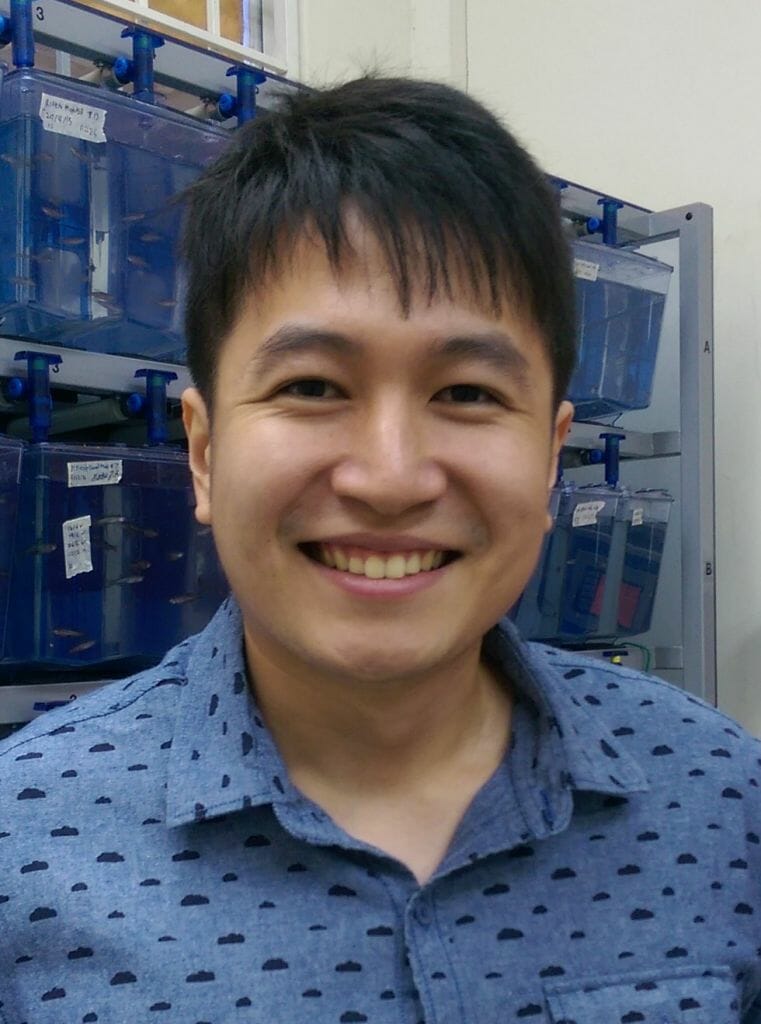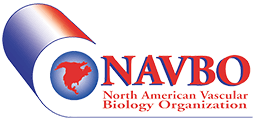
Lymphatic Development
August 13, 2020
Organized by NAVBO Member:
Kazuhide Okuda
Peter MacCallum Cancer Centre
Session will feature the following presentations:
Determining the genetic and developmental basis of human lymphatic vascular disease
Natasha Harvey, University of South Australia
The origin and assembly of the zebrafish facial lymphatics
Jonathan Astin, University of Auckland
Mysteries of meningeal lymphatic vessels
Jihoon Ahn, Center for Vascular Research/GSMSE, IBS/KAIST
Learn more about our speakers and download related publications:
Natasha Harvey, Ph.D., Centre for Cancer Biology, University of South Australia

Biography:
Professor Natasha Harvey is Head of the Lymphatic Development Laboratory at the Centre for Cancer Biology, University of South Australia and SA Pathology. Natasha received her PhD from the University of Adelaide and undertook postdoctoral training in the laboratory of Guillermo Oliver at St Jude Children’s Research Hospital, USA. Here, she focussed on defining the role of the homeobox transcription factor PROX1 in lymphatic vascular development. In 2005, she returned to Adelaide to establish her independent research program. Natasha’s work aims to understand how the lymphatic vasculature is constructed during development and how this process “goes wrong” in human lymphatic vessel pathologies.
Paper:
Lymphatic vessels are an integral component of the cardiovascular system. These specialised vessels play key roles in fluid homeostasis, dietary lipid absorption and the regulation of immune cell trafficking. We and others recently demonstrated that heterozygous germline mutations in the zinc finger transcription factor GATA2 underlie Emberger syndrome, a disorder characterised by lymphedema and predisposition to myelodysplastic syndrome/acute myeloid leukemia. We subsequently determined that Gata2 is crucial for lymphatic vascular development by orchestrating the construction and maintenance of lymphatic vessel valves. Our current work is focussed on defining the transcriptional mechanisms by which GATA2 controls valve morphogenesis in the lymphatic vasculature. We have identified both GATA2-bound transcriptional regulatory elements and GATA2 target genes important for valve development, some of which are also mutated in human lymphoedema syndromes. Ultimately, understanding the genetic basis of lymphoedema will inform our knowledge of the cellular events and signalling pathways important for building functional lymphatic vessels, information that will underpin the design of novel, targeted therapeutics able to promote lymphatic vessel function and treat lymphoedema. These genes and their roles in lymphatic vessel morphogenesis will be discussed.
Links to related manuscripts:
https://pubmed.ncbi.nlm.nih.gov/22147895/
Journal of Blood, “Loss-of-function germline GATA2 mutations in patients with MDS/AML or MonoMAC syndrome and primary lymphedema reveal a key role for GATA2 in the lymphatic vasculature”
https://pubmed.ncbi.nlm.nih.gov/26214525/
J. of Clinical Investigations “GATA2 is required for lymphatic vessel valve development and maintenance”
https://pubmed.ncbi.nlm.nih.gov/32182215/
J. of Clinical Investigations “Atypical cadherin FAT4 orchestrates lymphatic endothelial cell polarity in response to flow”
Dr. Jonathan Astin, Ph.D., University of Aukland

Biography:
Dr. Jonathan Astin received his Ph.D. from the University of Bristol and carried out postdoctoral studies in the laboratories of Prof. Catherine Nobes (University of Bristol, UK) and Prof. Phil Crosier (University of Auckland, New Zealand). He gained a lectureship position at the University of Auckland in 2018.
Dr. Astin’s research focuses on zebrafish lymphatic development. He helped develop some of the most widely used transgenic lines for visualising lymphatic vessels in fish and compiled the first embryonic atlas of zebrafish lymphatics. His laboratory focuses on using zebrafish to investigate the development and guidance of lymphatic vessels - particularly the facial vessels.
Paper:
I will describe our recent work (EMBO Rep. 2019 May;20(5):e47079. doi: 10.15252/embr.201847079) identifying the origin of zebrafish lymphatics and present evidence for a novel non-venous lymphatic progenitor that contributes to the zebrafish lymphatics.
Link to the related manuscript in Embo Reports: https://www.ncbi.nlm.nih.gov/pmc/articles/PMC6501020/
“Zebrafish facial lymphatics develop through sequential addition of venous and non-venous progenitors”
Jihoon Ahn, Ph.D., Center for Vascular Research/GSMSE, IBS/KAIST (lab of Gou Young Koh)

Biography:
Dr. Ahn completed his medical internship and residency at Yeungnam University Medical Centre in Daegu, South Korea prior to joining the lab of Dr. Gou Young Koh as a Postdoctoral Fellow.
He is currently working on meningeal lymphatic vessels at the Center for Vascular Research, Institute for Basic Science in the Korea Advanced Institute of Science and Technology, Daejeon, South Korea.
Paper:
Given the vast amount of emerging evidence for the profound role of meningeal lymphatic vessels (mLVs), not only in physiology but also in numerous pathologic states such as in neuroinflammatory disease, ageing, and Alzheimer’s disease, the need for better understanding of the mLVs is greater than ever. Although much attention had been paid to the mLVs lately along with their recent rediscovery, the exact location of mLVs and the precise route of cerebral spinal fluid (CSF) uptake and drainage to the lymphatic system was still matters of debate. Here we demonstrate that meningeal lymphatic vessels at the base of the skull provide a direct route from the CNS to the peripheral lymphatic system. We further characterize age-related changes in these vessels that impair their drainage function and that might contribute to ageing-associated neurological diseases.
Link to research related to this presentation in Journal Nature. https://rdcu.be/b5Mf3
“Meningeal lymphatic vessels at the skull base drain cerebrospinal fluid”
*August 14 am times for Japan, China, Australia, New Zealand, etc.
Special One Time Offer
Not a NAVBO member, but are considering joining and would like to see this webinar? Contact membership@navbo.org for information on membership, our meetings and a link to this webinar.
NAVBO welcomes members from all over the world, you need not be in North America to join.
